Artwork made using a sublimation technique that allows the transfer of digital art over different types of media. The work is first created digitally in the computer and then transferred by a special technique into a painting. During the process of transfer many accidental marks stay in the final work creating a particular texture, that changes in every final finished surface. I started doing this for my son who is a fan of SUPERHEROES. Then I entered into the world of my own memories and the superheroes I grew up with. My intention with this series is to recover the private memories of an era and to display the different meanings and social resonances of the superheroes of that moment, fighting against evil and struggling for the good of people
This work was inspired by a series of Archie vintage comics. The Little Archie series, published from 1956 through the mid-1990s, chronicles the adventures of pre-teen Archie and his friends while in elementary school
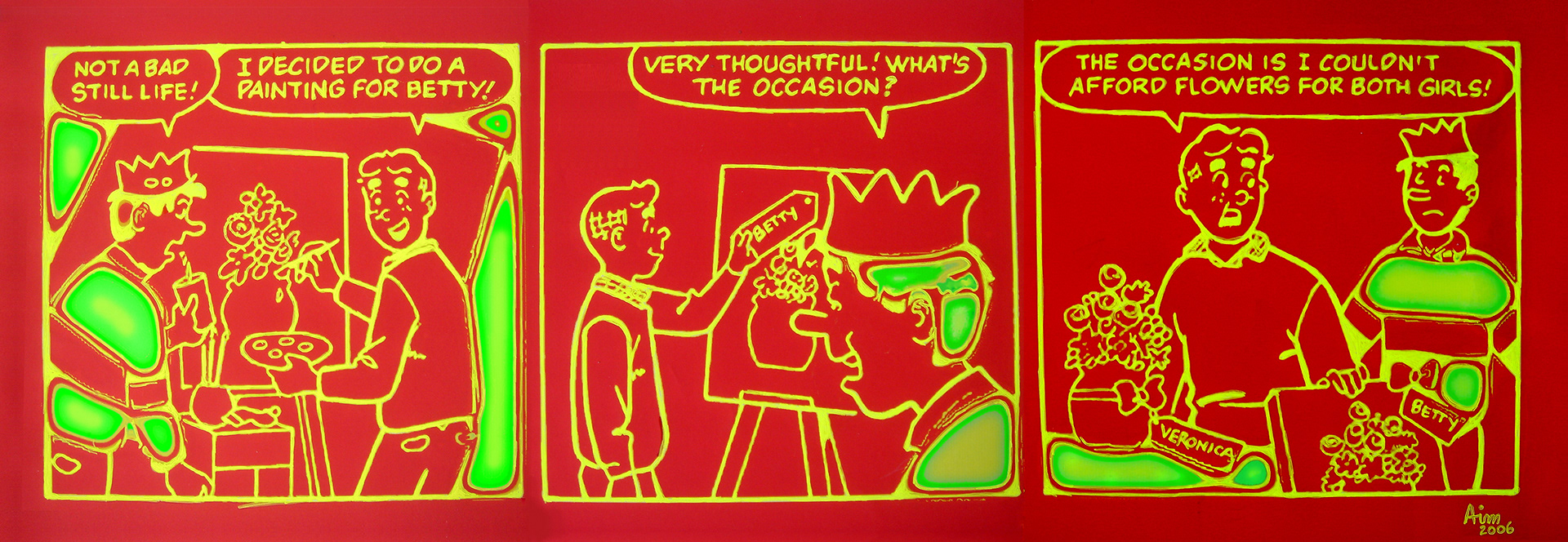

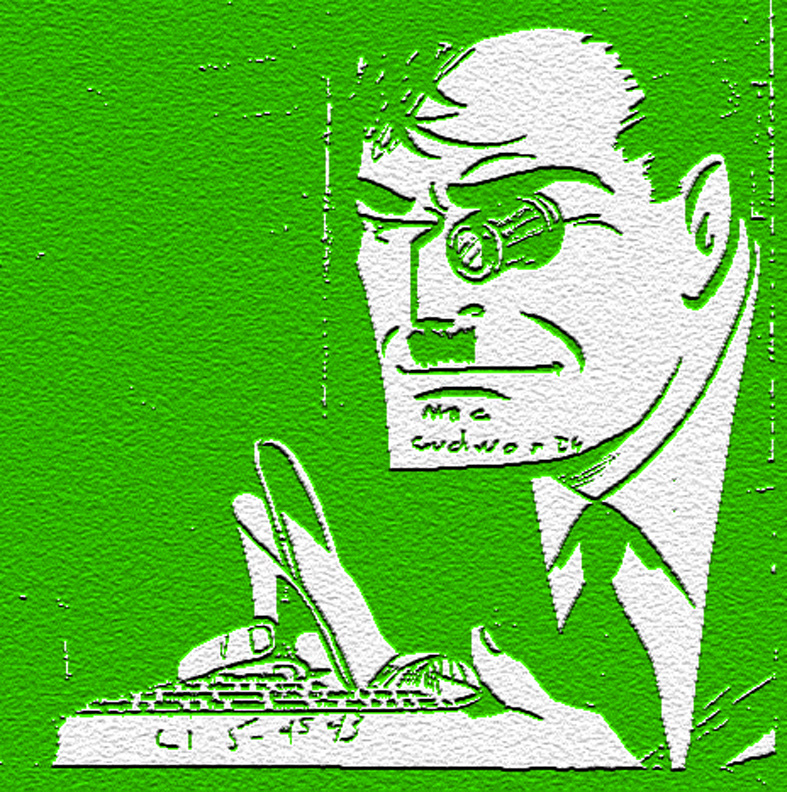
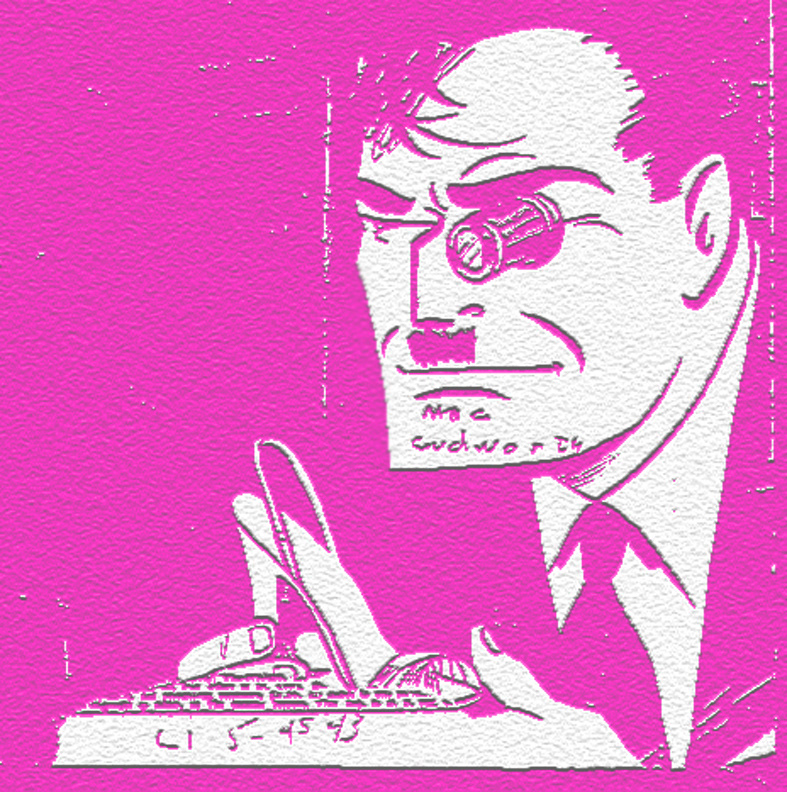
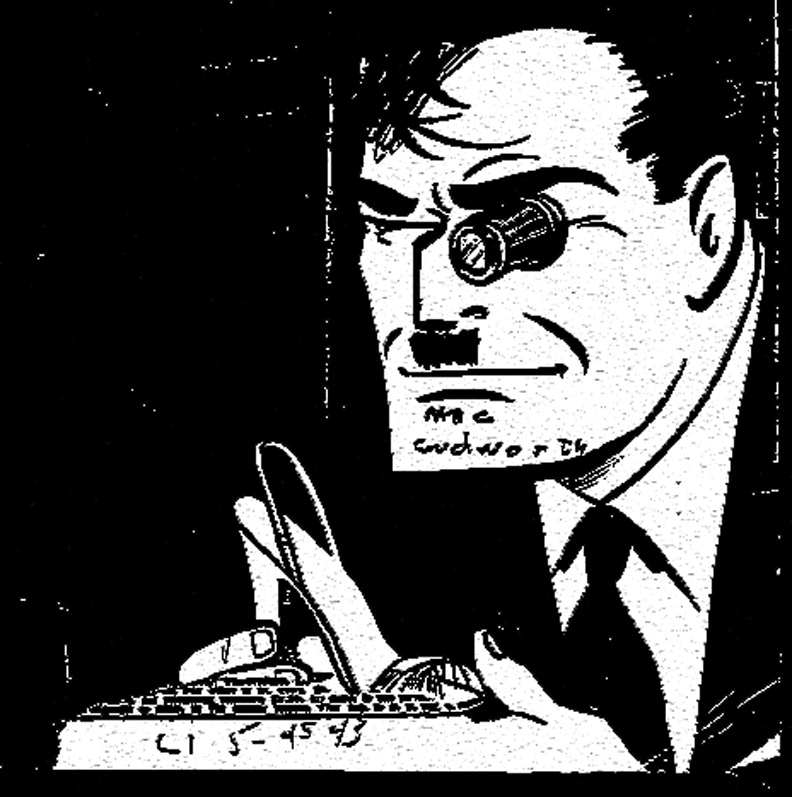
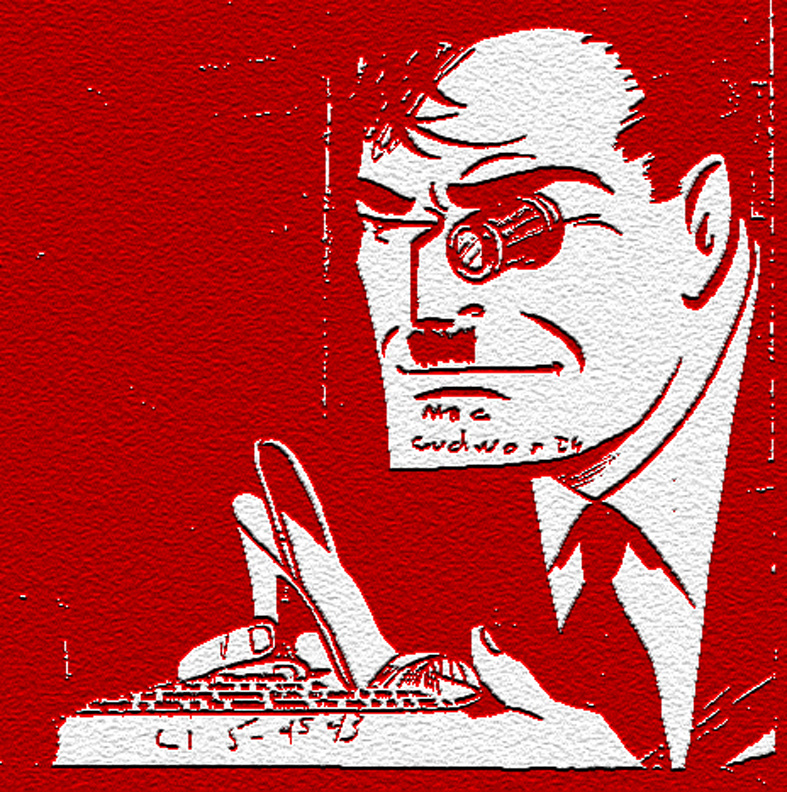
This work was inspired by a Dick Tracy's vintage comic dating from 1943 that probably belonged to the Abbot Hospital in England during World War II. The ball pen marks on the cover and the added mustache resembling Hitler, brings forward sad memories of the events that were taking place at the time.
The series was created using the same prototype over different pop colors to emphasize the power of Dick Tracy's image as a popular icon in the culture.
What is interesting about using vintage images is that the comic book holds in itself much more than a detective adventure, it brings out many emotive resonances and touches the social imaginary of people. This vintage comic points out the scars of a turbulent past. It talks about where events were taking place (England), when did they happened (1943), who were the persons involved (maybe it was a wounded soldier from the war who made the marks), and what was happening at the time. This comic creates a complex and imaginary fusion of events hidden in the image of Dick Tracy.
Dick Tracy is also a popular character in American pop culture. The character of Dick Tracy is a hard hitting, fast shooting, and supremely intelligent police detective who has matched wits with a variety of often grotesquely ugly villains. Dick Tracy was created by cartoonist Chester Gould in 1931 for a newspaper comic strip also entitled Dick Tracy. The strip was distributed by the Chicago Tribune Syndicate. Gould drew the strip until 1977. I appropriate this figure as part of a sequence of personages that has populated the mental imaginary of the fifties. In this image, Dick Tracy holds in his hands a very feminine wheel. In the background, it shows a silhouette of a woman in the process of falling down. D.T. shows up here as a savior .
Comics have been used to sum up current events with humorous pictures since its origin back in the 15th century. and hence they have played an important role in building our social conscience.
Comics are thought by some to be an art form, also known as sequential art, although whether they are an art form or are merely a medium in which sequential art is practiced is still a matter of debate amongst creators, scholars and readers.
In the 20th century, the term comics came to define early newspaper strips, which initially featured humorous narratives , hence the adjective comic.
Other interesting material:
Dick Tracy, his beginnings:
In the strip's first week, Tracy's girlfriend, Tess Trueheart, is kidnapped and her father murdered. Tracy joins the police as a plainclothes detective, tracks down the killers, and rescues Tess. He then decides to stick with the force. His determination, incorruptible honesty, and well-known willingness to use violence in excess of any that had ever before been seen in comics (devastatingly parodied by Li'l Abner's "ideal", Fearless Fosdick, Al Capp's strip-within-a-strip), combine to carry him quickly to the top of his profession — where he remains to this very day.
The secret of Tracy's success? Not a great love of civil liberties, to be sure! No, Tracy has always been a tough cop — but an absolutely honest one, and compassionate toward the innocent and helpless. That's the combo that made him popular, and has kept him that way for seven decades.
It has been suggested that this comic strip was the first example of the police procedural mystery story.
The FBI and dick tracy join forces hunting for fugitives:
The Federal Bureau of Investigation and comic strip hero Dick Tracy are working together to catch dangerous fugitives. On Sunday, August 22, 1999, the comic strip begins profiling the FBI's "Ten Most Wanted Fugitives."
The cooperation and support of the American people have always been invaluable to the FBI in its efforts to combat all forms of crime, particularly in locating dangerous fugitives. It is believed the additional publicity provided by profiling the FBI's "Top Ten" fugitives in the Dick Tracy cartoon strip will further inform millions of Americans that these individuals are wanted and may provide the important lead that results in a successful apprehension.
Over the next few months, the Sunday edition of the Dick Tracy comic strip will have an artist-rendering of an FBI "Top Ten" fugitive, and a short outline of who the person is, and what they are wanted for by the FBI.